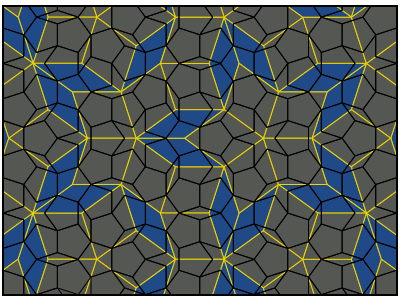Gardner now gets into Solid Geometry and Higher Dimensions, with The Helix. He begins by asking if there can be an alternative to a straight, or a curved sword. A straight sword can be slid into a straight scabbard, and a curved sword can be put into a scabbard of the same curvature. Are there any other shapes with the same properties? The answer is, “yes, the helix”. (Think of a corkscrew with constant radius.) From here, he goes on to mention the geometrical properties of the helix: in the limiting cases you get the straight line or a circle (if A is the constant angle of the curve crossing a line parallel to a cylinder’s axis, then if A = 0 you have the circle, and if A = 90 degrees you get a straight line). The shadow cast by a helix onto a flat wall can either be a circle or a sine wave.
The helix is “handed,” in that you can have right- and left-handed corkscrews that are distinct from one another. This brings Gardner to a discussion of handedness in both man-made and natural objects. Screws, bolts and nuts by convention are right-handed, but candy canes, barber poles, cable strands, and staircases can be both. We can have conical helices, such as the inverted conical ramp in Frank Lloyd Wright’s Guggenheim Museum in New York, which is cited as an example of a curve that spirals around a cone. Then we get DNA strands, narwal whale teeth and the cochlea of the human ear.
The Devil’s Corkscrew is a 6-foot tall fossil that turned out to be the remains of burrows of prehistoric beavers. If you count the turns made along the helical path of a plant from one leaf to the one directly above it, you often get the Fibonacci series (1, 2, 3, 5, 8, 13…). This is covered in the field of phyllotaxy, or leaf arrangements. Climbing plants are usually right-handed, but twining plants often twist the other way, and when the two types intertwine, the results are kind of romantic, as remarked on in Shakespeare’s A Midnight Summer’s Dream – “Sleep thou, and I will wind thee in my arms./…So doth the woodbine the sweet honeysuckle/Gently entwist.”
Ref. Flanders and Swann, Misalliance
There are many other examples in the article, but I’ll end here with the puzzle of the week.
You have a rotating barber’s pole, with painted red, white and blue helices. The cylinder is 4 feet tall. The red stripe cuts the vertical lines at a constant angle of 60 degrees. How long is the red stripe?




























